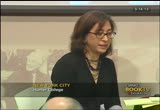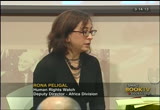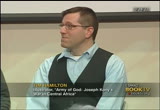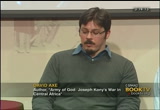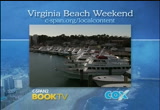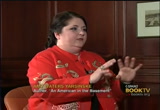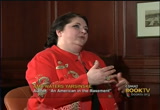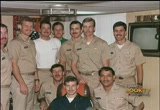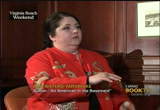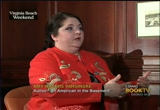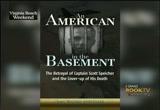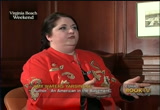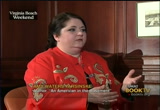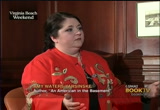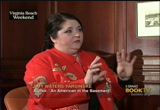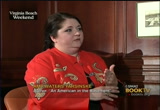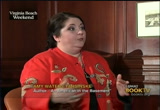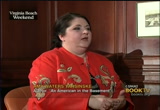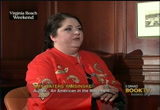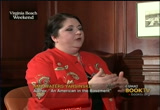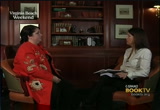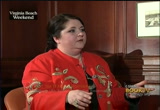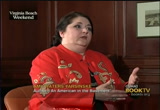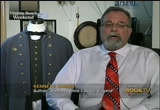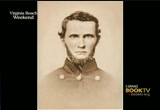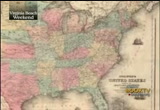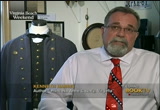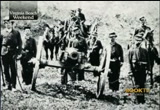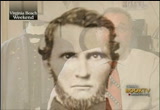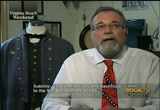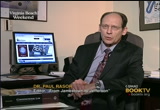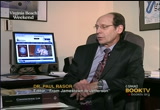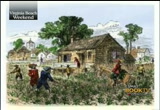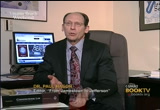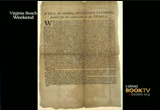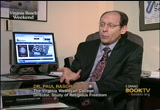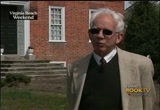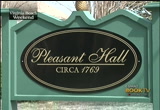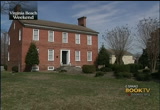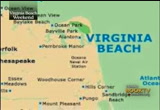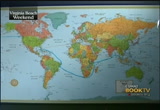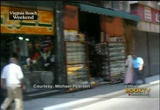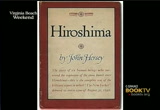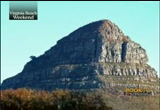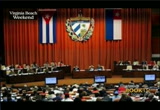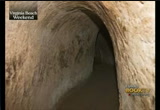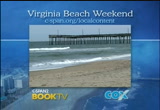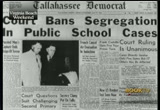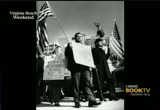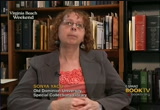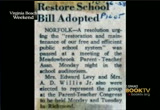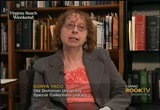tv Book TV CSPAN April 21, 2013 9:00am-10:01am EDT
9:00 am
>> by the way, i wanted to mention since you've talked about documentary, it occurred to me to tell you human rights watch premiered a very interesting film which i think is loosely premised on the lra, called war witch. .. galvanize attention to the coney lra phenomenon, the call for his arrest among other measures. tens of millions of hits online
9:01 am
and i think was both appreciated for how widely they got the word out especially among young audiences but also how it may have simplified the issue are not fully portrayed the complexity of the issue. so i was just wondering in terms of both publication and advocacy, what did you think of that effort? >> i don't want to tackle it too much. that came out while we were working on the book if i remember. and i sometimes to talk about my artwork, and i have all but of artwork at the end showing army of god. tom pauken high school kids, i asked, you know, who kony is. they all shake their head just now. this book wasn't out yet but they have seen the kony 2012 videotape. i didn't realize that many people did. they seem to be all about it.
9:02 am
>> for over simple find a complex issue, because we made a comic book about it, we are all guilty of the same. i am conscious of the criticism of invisible children. for the record those guys were out there when i was out there doing my research. they are all over the place. well-meaning. and basically my attitude is, 80 thing that gets a lot of people who are otherwise, to pay any attention whatsoever to this problem, is interesting. of course it shouldn't be a fantasy. so if these guys are making stuff up that would be problematic, but they are not. so go ahead and criticize them all you want. these guys, with their bridges, reached more people ago more people to care about the lra, have to care about congolese people than any other reporter or human rights advocates in the world.
9:03 am
and it's not that you and i are doing bad work. they did it up good, and good for them. can't criticize them. >> thank you both. it was really nice talking to you. >> thanks a lot. [applause] >> you're watching 48 hours of nonfiction authors and books on c-span2's tv. welcome to virginia beach on booktv. with the help of our communicate and cable partners, for the next hour we'll talk with local authors about their books with national storylines as well as looking at the history and culture of virginia beach. we start out with author amy waters yarsinske and her book "an american in the basement," which chronicles the cover-up of the death of navy captain michael scott speicher in 1991 gulf war. >> scott speicher was very
9:04 am
young, 33 when he went missing, navy pilot, father of two, kind of nice family started down in jacksonville, florida,. >> why the interest in him? >> the time he went missing and to read the headlines i thought this is odd he does why aren't they looking for him? why aren't they doing this? certain protocol that follows when something like this happens. if you think about this in the terms of the way i would think about it, about 1994, i started getting more interested in more interested in what was going on. because i would hear things here and there, people talking and i went back, by the time i got to the end of the '90s, the clinton administration was in, they kept talking about them, piece together the story, see what they're saying, what they were messing. and in my mind the way my mind works is all those bits and pieces of inflation become a mosaic and come together.
9:05 am
you start to get the clue that no, this is not right. you're not reading between the lines. you're getting this definitive from vice president cheney, or secretary cheney, sorry, at the time. we have a pilot down, he is a fatalities in they call him the first casualty of a good headline. is a headline and he as a cause for rejoicing amongst the cause that we didn't lose more pilots that i. the day he went missing in the wee hours of the morning, he became a statistic and not a person. and what had happened is they knew exactly where the airplane was that night he got shot down. they did know what it was. and the fact that's the story that just told the beginning of the book. you are at chapter three when you started this. you're working your way through the book and you're thinking this is kind of odd. that much up to three you get into the whole part about all, but no, they knew exactly who shot him now, how it happened
9:06 am
and they knew where the plane was. people will go, how could they know he was alive if he had been on the ground through have, for years. and how could you? another because district stations from the falcon hunter, cia, all of them, it'll place in together. the falcon hunter, and his identity is to protect in the second book but the falcon hunter did not like being asked to go visit him again. they promised they would get them out and leave him there again. and then it's not audible. and it is not honorable telling someone to trust you to come and do your job for them when they have been shot down. we make a promise to people in uniform that will do everything we can do not leave you behind, we will come and get you and, and we broke that promise with scott speicher.
9:07 am
we broke a sometimes they can't even -- i lost count summer along the way. almost 20 a thing for me. i lost count of how the times we betrayed them. anybody got anything of the fortitude to deal with this case was always try to get away from how he got shot down. they didn't want me to talk about. leave that alone, that thought important. how we got shot down was not important. he was going into his first target and none of his systems were working toward him -- were him, and another misidentified. we don't know if he was hearing any of the chatter that was going on. we don't know any of that because most of the systems like that failed. and so boom, the missile detonates right under the left wing of the aircraft. it killed the airplane but not the pilot. that's what the missile was designed to do. and so you get an ejection and
9:08 am
you get, the reason that data on aircraft is later found, was happening on airplane, is because that device is behind the pilot seat and where the rocket mortar fires off a seat and it was propelled out of the seat with him. that one piece was done the way it was is because it was ejected with him out of the airplane and ends up on the floor and founded later on. the rest of the thing, the avionics on airplane were always the airplane. even at that time frame, the navy was not going to let a hornet be located by the saudis or in the quote unquote friends in the middle east because it had secret, top secret material on board. it is just one of those aircraft that you want to go and retrieve it from. that was the big clue for me. you have to know where the airplane went down because he would not let just go down and
9:09 am
not be recovered. >> what happened next to him speak what he moved away from the aircraft. we parachuted down, from the sources i have, and talked about this, one of whom was, again, had to protect the identity of the 4-star involvement, but inforinformed me that both isras with him and had communicated not only by voice but later by the clicks on the radio. he was exercising what the radio was capable of doing. they were getting clicks. so whatever happens there, but he had done what they're trained to do when they hit the ground. you don't want the plane to get too far away from you. you don't want to be too close to a case the bad guys come up to the airplane, too. so he was fortunate that he ended up with a family group who were friendly. not all of them would've been so friendly and would've turned him
9:10 am
over. but he didn't. and so they taken in. he's a little banged up, not badly. and so the story goes, and he ends up with them. but they are going to move along whatever time of your they move the herds along up to 125-mile route, and and at the desert and back again. it follows the seasons of the year. even when they went to investigate that sight they saw the animal droppings. they saw where the herders have been there. they saw it discarded pieces of things. and they knew they had been there again. this is just a normal pattern. and so he stayed trying to do what he could do with the airplane. he stayed around long enough, and, in fact, the telltale was talking to the imaging command does they had overflight imagery
9:11 am
of that site on several occasions. and you can see when and when there's not ground air sickos. and sunday around 93 or so they have more signals on the ground. they are markers like boy scouts put down like directions, arrows going down this direction. court he tried his letter of the day, his word of the week. he tried all kinds of accommodations of things to get them to pay attention. what sometimes, you know, seemed obvious on the ground when you're putting it down, depending on the angle of the imagery to the platform to see it, it can become an less it is a believe they can't sometimes quite bigoted. in this case they did. they did with the imagery down. they did have imagery of his signals and could have only been him that day. he put down everything. the guy tried everything. he must have wondered why they couldn't see him, why they didn't want to hear him and come get him. he made it clear he was right there.
9:12 am
the frustration level must have been incredible for him. so we just moved off eventually. they come back again, and he did this repeatedly for probably two or three cycles of their migration. pretty soon, you know, a couple of visitations in between, rocky around the 93 timeframe, you've got the falcon hunter there and that wasn't his first visit as a. he had been there before. because the tribal groups, they talk quietly. they pass information. and they wanted to hand him over. they knew how dangerous it was to have him. and whenever when an auditor. and, of course, he paid the ultimate price for that. saddam was brutal as and when those to his own people, but to go to the groups that did cooperate with it and do things like that. >> was he injured? why didn't he stay released? >> there was no way for them to go. if you don't know where you're going to you're looking at something that looks, i've
9:13 am
always described it like the surface of mars. the iraqi desert looks like the surface of mars. there's not much of the. on the desert for that time of year, the knights and shovels they can to dig in to shoulder, it's like digging -- they can get in the ground. it was very hard to dig. it wasn't salty sand like you would see a lesser heavy equipment to dig down for the. the hardpan was a bad. there are many aspects of this that they were unprepared for when it went into that first night. the quarter we went down was actually pre-prep with rescue helicopters. so if you just called one of them, they notified react properly, 45 minutes in, 45 minutes out, they could have gotten off the ground. he was commuting. so that wouldn't have been a problem. but, unfortunately, they did like how he got shot down. how he got shot down started all
9:14 am
this. the friendly fire issue. and the mistakes that were made. and the way, the mistakes and the flying of it to become a comes down to the fact that, while his commanding officer did not shoot them down, to clarify that point, he's not the one who did it, but because he broke his permission and he broke from his mission profile to go after, when ahead at 14th and f-15s up to shoot down a mig like that, that's what they were supposed to be doing it because he broke from what he was supposed to be doing he created the confusion there with the awacs, the hot at the midpoint and the rest of the people in his formation who were not distracted looking for the mig your they just need to left -- lethe f-14s and f-15s do the job. the confusion, that's a mistake. you don't break formation until after something because you think you have to do this. and that's the mistake. that's the big one that started. and from there it gets to be a
9:15 am
point where the hawkeyes doesn't have permission, to give permission to fire. and anderson who is scott speicher's commanding officer, he is trying to ask him when he didn't -- we couldn't get permission to fire on the mig county goes to the hawkeye to try to get permission and the mission commander cannot grant that because that's not his job. so he goes back and forth, doesn't hear the call, an f-14 is on the call, the f-14 fires. that pilot did not do anything wrong. he did what he was told this post be doing and he took a shelter for joint the shot was at a point where the two points were too close together and he couldn't see the differences on the radar screen. now, the big secret to this, to some degree, is we were flying with some new platforms in the were. we have some new aircraft that
9:16 am
were able to get nighttime imagery of all the events that happened that night. they developed all sorts of new things. they tr try them in were also td up one of these platforms got infrared night and imagery of the issued and. they knew who shot him down from the get-go and they knew what happened to her and in the infrared nighttime imagery they captured the ejection seat going off. it was just, they knew all along. and when admiral johnson told me later on in an interview, he said, he kept emphatically, said look, we knew what happened to this airplane the moment he got shut down. because if we didn't, somebody else could've been shot down assembly. if it was an enemy who shot him now, we need to know that right away. we don't have the luxury of taking this come even to the next mission cycle. we have to know. he wouldn't tell me about the
9:17 am
infrared nighttime imagery at the time. that was still very hush, and, but what it was like a county was, look, don't let anybody tell you that he was shot down by a mig or a missile off the ground. don't let them tell you these things because that's not what happened. they know that night, he said, that not one enemy aircraft fired at any of our airplanes that night. and 1995-96 most investigators were asking almost stupid questions. they should already know the answer to the why of having to ask tha a question or why can'ty just flip through logs and find out what it's because they gather up every one of the logbooks, all of the ordinance logs from anything to do with these airplanes that night, got shipped over to the command ship whether all meeting to cover up the story. so they did away with the locks. that's why you don't have them.
9:18 am
and, in fact, put the fear of god into people who actually had kept copies because they felt guilty about it. one of the chiefs sent a copy, and he will not turn over because he still so afraid of what would happen. and if he turns over two, if i were to get or someone were to get a, but the talk about, talk about oslo you don't tell anybody who they are. general schwarzkopf, the whole office in riyadh. turns out he was never notified that schweiker was down when he was down. i went to go see. i visited him years ago. he was a reservist then, and he lived in virginia and i drove out there to see him and talk to him and show him what i had. i remember clearly at the time he slammed his fist down on the table when i showed him the maps, and he said i had them here and here and here. and we put people in here. we had the helicopters here.
9:19 am
unit, the pre-position, they went down. it turns out that he felt he needed to keep doing this job. he went back, ended up running the survey group that looked for speicher lead on. he ran the team looking to kind of find him again and went to iraq again in '03. >> can you talk to me more about what happened to speicher? >> as he parachuted to the desert floor and he started his odyssey underground, he was a shoulder, -- soldier, not an aviator. he paid close attention to everything he was taught because he did well. he was caring a budget wit with, the items that they get are given to care with him that has to do languages, the american flag and it has different linkages, i annoy them. if you help me, there is a
9:20 am
reward for me. we will exchange something for you, it could be camels, it could be a number of things. but take me back to my command. so he has that within. that was never recovered and all the things that have been recovered now, that was never found. other important pieces of gear were never found. helmet was never found. kind of a big piece. the bulk of the parachute itself was never found. all of these things are salvageable pieces, and looked to me as if, reading the reports, had been cut and salvaged for what they could be used. they were taught to turn all these items into survival gear. you find one part, mail if you know parts the person was on this junket to go find his remains was not an ejection seat aviator because they call the items that they found by the
9:21 am
wrong names. they are mail and feeble effort to get it if you find one for and you don't find other part, where he snaps t the shoot off, it's now somewhere else. they could've used for something. they hit it. they buried it. it looks like he buried a lot of his gear. so the helmet has probably been buried somewhere. so they never found the blood shall which he would have shown. they did not determine how he died because they don't have enough of him to do that. they found enough to reconstruct part of the skull. these were seeded remains. first of all, what the american public has not been told about these remains and certainly was not told to the media when the find was made, is that he had, they left a job own, identifiable do the work you. you. yet too capped you. yet to captain crunch ethernet certain feelings and things that were very clear it was him. but then they left enough of the
9:22 am
skull and it was in fragments, but in the report the remains had been moved at least twice before they were reburied on that site where they were found. and that he would never be able to know that there were remains, it was only 12 inches above where the seeded this, not very deep. and so they dug down the 12 inches and suddenly they have 12 pieces at a jawbone and all this other stuff, and the used marines who were not trained as forensic pathologist or anthropologist or anything else. and they're digging with backhoes. it's not exactly what you would do if you actually were really trying to do, it's like and where they're going to find what they're going to find. all sort of staged. you look at delicate they were when investigated 1995, and i very carefully, they laid out, they lined of off areas and the dug very carefully. they had proper personnel on
9:23 am
board who could do that. they were looking for remains our looking for remains or artifact and that kind of thing. but this was just all kinds of digging up bucket loads of sand and turn it over. it's almost as if they knew what they were supposed to look. but if you look at the surface of the that area, the aircraft itself is pretty much disintegrated and gone. they actually don't have the ordinance they buried the first thousand and five on purpose. they dig it up like it's a new discovery in 2009 and it wasn't a new discovery. we have to wait for ordinance people. no, they buried it because you can bury it and nobody's going to get hurt by it anymore. they acted like that was some be discovered and it wasn't. >> what you did they find his remains? >> late july 2009. >> want in your research, do you know when, how long he lived after the crash? >> there were some questions. the remains do not appear to be below surface for very long. apparently they spotted him being moved about two weeks
9:24 am
before he went into -- off again 2010. you are looking early march 2003 he was moving northeast in a country which makes sense because they're headed for iran or iraq and iran. that would also be heading up into saddam's home territory at that time. so he is being moved. >> so he crashes in -- >> ninety-one. he ends up parachuting out. decades of being captured by saddam's people in the late 94-95. we announced what we wanted to go look at the crash site. this is the clinton administration and they decided -- he said he was going after anybody to be. he wasn't going to be bothered going after somebody else. what they found, what they found that was speicher had gone into saddam's custody at least by 1995, and that's where the other
9:25 am
prisoners in abu ghraib and other places he was held, locals start to circle sources and then he started get more stories about him and how he got very sick. and apparently was triggered by a number of different types of special physicians over time. but he was kept in a very special area where saddam kept his former business. they were high valued. there are only a handful of people in his regime who would even know the thing particular about that. but the men he was searching for primitive type time, one of my sources talk to him by nicotine into. he said they called speicher the nose by the. they called him go the crows by the. they gave him an arabic name so they can be identified on the prison registration. >> during your research and in talking with all of your sources, obviously since him being shot down by someone fired, then other people shot
9:26 am
them identify, why was this so important to keep his shooting by friendly fire so covered up? >> it was a mistake and the people involved in it, they were worried about the careers is what it was. being wrong, a lot of these guys didn't want to admit to be run. i talk about the conduct at the very end of the book and the code of conduct. and that you cannot expect these people to go out and give the full measure like that and then turn around and not on your end of the bargain. you have an obligation. so you have a book, a beginning, a middle and into the store now. but more than that you have, what, where, when an epic that's not been told to the american public it. no one knows this in full. the book itself now, the new book, "an american in the basement" is now 576 pages.
9:27 am
you will get the story in the book. and it's really, it's a story that can become it's been almost a 20 year odyssey of trying to speak for him for scott speicher, to clear his name almost and if he didn't do anything wrong, who knows, he had been everything he could to come home and we failed him. >> up next, author kenneth harris explains how his family played an important role in the small town of princes and county during the civil war. >> the name of the book is "princess anne county: its contribution and sacrifices to the war between the states." i wrote that book because i was intrigued as to what went on in this area during the war. i had done a little research on my family and found out that they participated in that war,
9:28 am
and they participated on the side of the confederacy. my great, great, great grandfather was edgar burroughs, was a methodist minister and princes and county. in april 1863, he was in captain john's vocal cavalry militia. he and the captain went to richmond. they petitioned then the colonel who was in charge of a state armory in richmond, anticipation of the were coming to princes and county. and when virginia wants to its first convention in early april agency spee-1, each county in the state of virginia had to send a delicate to the convention in richmond. editor was elected as alternate, the first convention that virginia had, they didn't get anywhere with it. they didn't vote to secede.
9:29 am
they didn't vote not to succeed. it was kind of a stalemate kind of thing. two weeks later, virginia calls for another convention. the former governor had stayed in richmond for the first convention the politics of further about the secession of virginia. so when the second convention convened, the folks of princess anne county said the alternate to that convention who was edgar burroughs but at the time the secession didn't necessary for the state of virginia to secede. virginia city, edgar quickly came back and mustard in a calgary company, company a fifth virginia calvary. they were stationed along the coastline of the old princess anne county, today's modern day virginia beach, from the oceanview area all the way to the north carolina line, or border. made of 1862, north and the surrounding area counties, princess anne county being one of those counties, came under virginia occupation for the
9:30 am
duration of th the war. the were effected princess anne county in many ways. the folks here under the occupation of the union forces, their husbands, their sons, the grandsons, their nephews, their uncles. all these men and princess anne county were all fighting for the confederacy, and because these folks here were southern sympathizers to the cause of that war, they suffered dearly at the hands of the yankees or the union occupiers in this area. union troops would come down here sporadically in small patrols because they didn't meet any resistance here in princess anne county. like i said, although menfolk other than the younger men and older men, everybody else was off fighting for the cause. leaving the union patrols are going in and out of the county. they didn't have anything to fear. edgar wanted to wash his hands of the work, but when he came back home in january 1863, of course lincoln announced the
9:31 am
proclamation emancipation, this set in motion a lot of blacks, free and slave, run off the plantation here in princess anne county to join the colored troops that were being mustard in the city of norfolk. these copies were mustered into the confederacy for one purpose, and that was to combat the enemy behind enemy lines. in the early spring of 1863, edgar winter richmond. he had talked to the secretary of war for the confederacy. he asked the secretary could he muster in a company right here in princess anne county? they agreed. he granted after permission to mustard and a partial ranger company. he would wreak havoc on the yankees, especially the troops patrolling in and out of princess anne county. of course, they would write out guerrilla fighters would come out of nowhere out of the swamps of princess anne county and
9:32 am
inflict considerable damage, mainly to the rear of the column of these men. they would disappear as fast as they would it be. in november 1863, colonel alonso draperies first u.s. colored troops came in to princess anne county. they went to long island, the residents, major editor boroughs, long island is in the middle of the day. they laid and wait for him for today's. he did end up going home for fresh supplies and when he approached the house, draper and his troops. all of a sudden they had edgar in shackles and chains that i. but those colored troops literally got down on her hands and knees and prayed to god that the guerrilla had been captured and imprisoned him. he went to trial for treason, for being in the confederate army, tried and sentenced to hang. at the 11th hour of the day he was supposed to be hung,
9:33 am
something edgar didn't want to do, but figured he didn't have any choice in the matter, was to sign the oath of allegiance which would give him a stay of execution. president lincoln was going to send were down to butler as to his condition of his release. sadly, the night there had been a shooting were edgar had been taken to, he was shot in the back and mortally wounded in 24 hours later he would die. what i would like for folks to take from this book, "princess anne county: its contribution and sacrifices to the war between the states," today's society believes they fighting is over slavery. a lot of these people, they went on to fight, they didn't own any slaves. they weren't fighting to keep slavery alive. they were fighting for issues that concerned their families, their homes their way of life. that's what they were fighting
9:34 am
for. >> this weekend booktv is in virginia beach, virginia, with the help of our local cable partner, cox. next, virginia wesleyan professor doctor raiser presents his collection of essays on the religious diversity of colonial virginia. >> the book emerge out of a project we did at the center which began as a sense of lectures that were open to the public, one of our min many lece series. and it was coordinated with a course in the history of virginia. our original idea was to treat a background that led up to jefferson's famous statute for religious freedom by looking at some of the aspects of colonial lights in virginia that provided what i like to call the political and social context or
9:35 am
the stuff that created the space for a statue like this to come out of. the religious dynamics are i think defined by remarkable religious adversity and economy, much more than is commonly supposed. there's obvious diversity from having -- and native traditions price on it but even among the european settlers there was a remarkable range of diversity. the anglican church was the established church, the church of england, and, of course, it became the established church by default in the virginia colony. but it wasn't on anglicans, even anglicans do not grant everything. there were also puritans here. there were catholics. there were some jews. there were quakers to even begin to appear in the earliest decade. and this kind of dynamic was part of the diversity that began to develop in terms of people learning to get along with each
9:36 am
other and how do you negotiate the spaces and the colonial settings. there were lots of the settlers who practiced non-christian traditions in the sense of the folk traditions or magical forms of religion at th the time. answeand so that had to do withe diversity. then there's the diversity of -- summer muslim, some combined african traditions with what they learned about christian practices. the established church have the authority of the state or then the crown behind it of course, and wanted to regulate religion here in the way it was done in england. but they had to deal with the reality of the clone of setting, hardship, the settlements were sparsely place but it was hard d to get priest. and overtime as the diversity increased and the kind of competition for space increased, the established church kind of have to negotiate what he was
9:37 am
going to do with all this. the traditional story of the statute, jefferson statute for religious freedom is it had -- his genius is a factor in it of course. we like to say that its intellectual founding basically jettisoned lightman ideas of freedom of conference and protecting the states and the influence of the church on the one hand, combined with theological equivalence of evangelical groups who were resisting church and state authority over them, and their theological beliefs were that true religion could not be compelled. they thought to protect religion from the influence of the state, but they both favored church-state separation and the idea of freedom of individual constants in the dynamics can together to sort of create the political space for this. two basic things.
9:38 am
in this establishes the church of england, or what by then had become protestant episcopal church. so it him and it treats all in the process, it treats all religious groups equally. not have power over any of the others. and an establishes the principle of freedom of country. individual conscience and religion could not be compelled to get also does a third thing that doesn't get talked about as much, removes the idea, a eliminates the idea of religious idea for holding public office. the interesting dynamic was the choice that the virginia authorities had to make about the relationship of the church and the stake him and they were advocates for continuing the preexisting condition, the anglican church. the others would be tolerated on certain levels.
9:39 am
and the opposite he was the view held by jefferson and some of the dissenting protestant groups that they should actually no connection at all between the church and the state. they should be completely separate and should be left to fend for themselves without any state-supported thing that was a middleground where they wanted to sort of, not have an established church in the traditional sense but still have a system that supported the christian churches broadly speaking, supported christian ministers, even though the others would have the freedom to continue their own practice. and, of course, it was jefferson's view and the view of the dissenting churches. one of the dynamics that comes out of the statue comes to the statute not only influenced the federal constitution, it also includes the develop church-state relations an in otr states, not all states completely separated the church from state authority.
9:40 am
in the early years it was only the federal government that was bound by the first amendment. no one thought that controlled the states. a lot of that is the influence of the statute. this statute is more important than people sometimes -- if they know about it at all. the remarkable thing is that jefferson himself named this just a couple weeks before he died, wrote out a little thing how he wanted to remember andy sketch that his tombstone and how he wanted it in grade. one of the things you want to put on it is a huge be known as the author of the statute. that's remarkable. he was still thinking of that was one of the things he wanted to be most remembered for. and the reason i think is, and certainly one of the things we want, is this statute influenced what we now take for granted in terms of church-state relationships and freedom of religion and so on. and the statute, we can say that
9:41 am
it started it all but it was a key document that created the kind of legal constitutional framework for that dynamic to become part of american life. >> author and historian stephen mansfield walks us through princess anne county and virginia beach next on booktv. he joins us on a recent trip to virginia beach, virginia. >> in 1968 and was invited to do some research into the history of virginia beach. and after considerable length of time when i was doing research during the summer, i wrote "princess anne county: its contribution and sacrifices to the war between th"princess annd virginia beach: a pictorial history." it had a total population of something like 8000. at the turn-of-the-century there
9:42 am
were only about 11,000 people in all of what is not virginia beach, the city of 440,000 or so we are talking about over the 18th and 19th two into the 20 century, very sparse population. the village became the town of kingsville in 1783. at its peak probably in that era had maybe 200 residents. that number did not increase really before the 20th century. but the commercial activity that was here reflected the positioning on the eastern branch of the elizabeth river which was navigable by ocean going vessels up to a price with the time of the civil war in the 20 century this house became known as pleasant hall. it was actually constructed backend we think 1769 by a man named george logan who was a
9:43 am
merchant, who had operations both here in what was then the village of atlanta, skirmishes took place here in this house. in november 1775, british troops who came here were led by the last load governor of virginia, the british were successful in defeating the patriots who scattered relatively quickly. and in the wake of that victory as the governor chose to designate it, the governor issued a proclamation which declared in effect marshall law for the county of princes and, required all of this history wear red ribbons to show their loyalty for the mother company. the first house of worship actually was the old courthouse building, but that was acquired in the 1820s, and it served for
9:44 am
almost 100 years a. across the street from us is a church which was organized in 1843, portion of the old sanctuary survived a 1940s fire, and, therefore, it is the oldest house of worship here in this area. the city of virginia beach as we noted consist of 310 square miles until relatively recently, very rural, in the beginning of the wicked are only 19,000 people in all of the modern city of 440,000. and so the historic buildings that we have going back to hundred, 250, 300 years are really very scattered. today, virginia beach is known to many people because of the resort and the oceanfront. that was impossible really in the 1880s when the rail line was constructed from norfolk to the oceanfront. there are several buildings at the oceanfront which reflect the early years of the virginia
9:45 am
beach resort. the cottage that dates from 1890s, the cavalier hotel, the grand old hotel that dates from the 1920s. virginia beach as a city owns half a dozen historic properties, including houses that were constructed 18th and 19th century, and we are fortunate the city has a commitment to preserve and operate and interpret those structures. the assumption because of our positioning on the chesapeake bay on on the oceanfront, that this has always been a populated area with a good deal of activity reflecting development on those coastal areas. but the reality is that this was a very isolated area. because in part that went solo in the way of good transportation routes into the area. in the 1850s, edmond road at one point he thought princess anne county was the least know,
9:46 am
lisa president counties and all virginia. 100 years later this was the fastest growing county at one point the most rapidly growing city in the united states. >> next on booktv is a trip to virginia beach, virginia, old dominion university professor michael pearson discusses his book, "innocents abroad too: journey's around the world on semester at sea." >> this is an educational organization that is under the aegis right now of the university of virginia. students from all over the united states, college students spent a semester at sea, applause, students from other countries. but in the fall of 2002 and in the fall of 2006, i circumnavigated aglow. you get a sense of the entire world. and for somebody like me who is a writer, i believe that writing is all about seeing. and this probably not many better ways to change your perspective, to open up your
9:47 am
eyes and to go past the known into the unknown world. i went to brazil, went to cuba. we went to cuba. we went to vietnam. we went to burma. spain, to italy, morocco, south africa, kenya. in 2006 i'm not -- we ended up creating a friendship with them. his last words were to me in 2006 was, remember christian and muslims, we are all brothers. i went and spent two days with him. i think i learned a really important lessons about travel at about the importance and significance of it. that is, muslims and christians, just as he said, he wasn't an educated guy but he was a smart guy. but whatever was we have more kinship with people around the world than we have difference.
9:48 am
fascinating to go to burma, aung san suu kyi, should still under house arrest them, to see the situation. to me burma was a lot like cuba. and that is very repressive, totalitarian societies. and see a world in which you can't, you're going to a bookstore and there are maybe 20 books in the bookstore. everything is censored. or go to cuba and try to find an internet café and you can't find one. to see situations where people don't have the freedoms that we often take for granted, were a limit i would say. i believe firmly in learning spirit it's one thing to read john hershey's hiroshima. i think that's powerful, important understate about. but have the advantage of reading that book as your traveling towards japan and then
9:49 am
you get off that ship and you go to hiroshima after having read that and your with 10 or 11 students, and you meet a japanese gentleman who is 75 years old, who was seven years old when the bomb dropped on hiroshima. so he was there. he experienced it, and he comes back every year to that memorial, to the atomic bomb. to meet him and talk to him and he's somebody who has survived that, i think puts the book and dramatic, and emotional and intellectual perspective that you simply can't have if you're in the classroom. we sailed into cape town, and that is to be one of the most beautiful ports you could sail into. one of the most beautiful situations, table mountain, lyon said it. but there's such a discrepancy in the place in south africa, it's sort of a crackling sense of potential violence in that country. plus a great gap between haves
9:50 am
and have-nots. where people live in the township our kin, cardboard huts and then there are people who live, these people who live behind 12-foot high, two feet thick walls come here, fortresses. what was amazing about cuba was, number one, that most americans didn't get to go to cuba. in order to get to cuba you had to fly to toronto or some other place. castro certainly is the master of propaganda and he wanted to promote his agenda. and i think we had a sense of that but we were brought to parliament. we got to me castro. we got to hear him speak for three and a half hours. he did, he stood up there, 70 some years old. three and half hours. even though he didn't answer any questions, no matter what question was asked of him, he somehow found a way of making that into a propaganda
9:51 am
statement. and then ending up the last 30 seconds with an answer to the question. we got to ask castro questions, and the first question that one of our students asked was whether or not he was involved in the assassination of john f. kennedy. which made us all gasp a little bit because we thought maybe we are not going to get out of cuba. the experience in vietnam, is really an odd -- an out of body experience as a was for the student. we went to the were museum in hanoi. we went to the tunnels outside of ho chi minh city. the experience of going in those kabul, recognizing what their fathers had to do, what i probably could have been doing at 19, to crawl through those tunnels, even the tunnels that are made into a tourist attraction a little bit. you know, the dirt was taken away and cement, cemented.
9:52 am
but only about six of the 15 students were with me could actually make it through the tunnels. it was too scary, to close, too claustrophobic for the. swipes think that give them a vivid sense of what it was like for their fathers. before we got on that trip, we read tim o'briant, the things they could. when he talked about going into those tunnels about imagination seeing the killer, about going into that darkness, not knowing what would be there. i think again it gave us a vivid sense that literature can do this too, but in to be able to take the literature into the world with that i think enhances both of experience in the world and the experience of literature as well. >> four years after the brown v. board of education ruling in 1954, resistance to school desegregation average and left 10,000 since out of school in
9:53 am
norfolk, the largest number of any school system in virginia. next, sonia yaco shows us material from the special collections of the old dominion university libraries that document virginia's reaction to school desegregation and citizens efforts to reopen schools. it's all next on booktv. >> we will be talking to one of our most important collections and that is our school desegregation collection. 40, 50,000 pages of material on it. in 15 different archive collections. in 1958, norfolk, virginia, made history by closing secular schools and shutting out 10,000 students to prevent 17 african-americans from being admitted. when brown v. board was first passed in 54, virginia sat back and said, this is going to be over. we are not going to worry about it because it's not going to
9:54 am
happen. then when it became apparent that no, the court was quite serious about and they would be federal backing for it, a series of laws were passed called mass resistance. and these laws were part of something called the southern strategy by senator byrd, who led the states in the south to his, his phrase was will do everything we can to massively resist integration. the laws that were passed were bizarre things. they ende ended compulsory educn industry. as soon as any negro child goes into a white school, and amusing of course the terminology of the time, the governor can immediately seize control of that school. there was a provision in the law that anyone that didn't want to go through integrated schools could get state funding to go to a private whites only school. these are called segregation
9:55 am
academies. and the most important part of the movement was the any time any school was integrated in any public school was integrated, the governor immediately seize control of that and closer. he could close all of the administrative and financial persons at that point. in 1958, after a series of laws, the federal court said you must admit 17 african-americans. now, up to that point there has been a lot of lawsuits to african-americans sued -- through the naacp and lawsuits to try to open schools, to integrate the schools. nothing happened. it eventually got through and then okay, you've got to admit some. 151 students applied, african-american students apply, and the teachers were going to get into a white school was,
9:56 am
there have to be an interview, you had, kids would go in alone to a group of white people who, i think a wild guess, were not that friendly, and be interviewed with questions like, where does your dad worked? have you had experience in integrated settings? which is pretty odd any society where there was almost no integrated setting. are you a troublemaker? do you hate white people? have you been in trouble with the law? african-americans have become balances that but they had to go through rigorous testing, two different sets of tests. and after all that the school board came back and said, it's the most amazing thing, none of the students were good enough to be in a white school. they published their names in the newspaper with a list of what each of these kids wasn't good enough. here's a kid that failed scholastically.
9:57 am
here's a kid not a bad background. is a kid, they took it to the court and the court said, you know what? we are not feeling it. come back with us again because you will integrate. finally, they take 17 students that they would allow into the school. and it's not clear why they picked those 17 students. i know some of the students, and they said, they thought maybe they were lighter skinned. then he looked around and said no, looking at us, that's not it. maybe we had last names that sounded something -- no one could quite figure it out why the 70 were picked. the same day that they were admitted, the governor sent a letter saying because you admitted to students we're shutting down those schools that you admit black students to. and immediately 10,000 students were locked out for fibers, the biggest closing in u.s. history to prevent integration. some of them went to private tutoring schools. some of them gave up, if they
9:58 am
were 16, 17, they joined the navy. students never went back. some went to neighboring schools. for those 17 students, academic and student, they were tutored rigorously tutored in a school set up at the first baptist church on top not only high school courses, but how to deal with what life would be like when they went to a white school, have to do with the pressure and the hostilities, how to get through it. white parents brought a student in norfolk claiming unequal protection because they weren't allowed into his school but it's the only case in the style -- in the south were white students and white parents fought to get schools opened the integrator and that ultimately appeared on the same day a federal court and a state court ruled the most mass resistance laws were unconstitutional. the problem was that in the
9:59 am
strategies just change. things happened like virginia beach started so that students didn't have to go to integrated schools in norfolk. so things did not start changing until there was busing for racial balance. bussing start in most places in the early 70s. there were no students in all single race schools. there were about 10 student, 10% of students were in schools that had 80% one race. but basically you had to integration. there were not all black schools and always schools. in the early '80s, the mid '80s, norfolk and decided to get rid of busing for racial buffer element is cool students and introduced what they called neighborhood schools. norfolk like many other communities has residential segregation. if you don't bus students, then you have kids just going to schools and communities that are single race. ..
86 Views
IN COLLECTIONS
CSPAN2 Television Archive
Television Archive  Television Archive News Search Service
Television Archive News Search Service 
Uploaded by TV Archive on

 Live Music Archive
Live Music Archive Librivox Free Audio
Librivox Free Audio Metropolitan Museum
Metropolitan Museum Cleveland Museum of Art
Cleveland Museum of Art Internet Arcade
Internet Arcade Console Living Room
Console Living Room Books to Borrow
Books to Borrow Open Library
Open Library TV News
TV News Understanding 9/11
Understanding 9/11